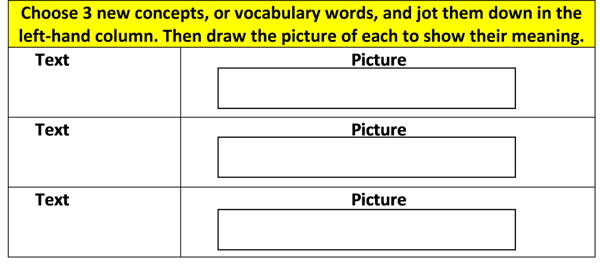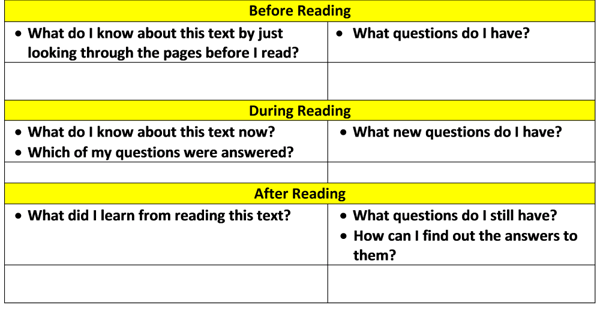Top Mistake # 1: Assume Your Students Can Automatically Use Nonfiction Reading Strategies.
Many students struggle with nonfiction reading and lack the strategies needed to comprehend complex, grade-appropriate informational text. Nonfiction is particularly challenging because of its unfamiliar vocabulary and new concepts. Research shows that comprehension increases when students receive direct reading strategy instruction as they read compelling content.
Some strategies children need to be taught, and practice, are how to:
• Make text-to-self, text-to-text, and text-to-world connections
• Determine what is important as they read
• Infer the meanings of new words and ideas
• Create sensory images in their minds as they read
• Use context clues to clear up points of confusion
• Read charts and graphs
• Form questions in their minds before reading, as they read, and after reading
• Use the organizational features of nonfiction text to understand content
The right technology can be useful in helping your students learn the strategies needed to comprehend nonfiction text. Look for programs that teach nonfiction strategic thinking and provide students with ample practice. You can also create your own templates. Here are a few suggestions.
• Creating Sensory Images: Ask your children to identify text that helps them form pictures in their minds. Then encourage them to draw simple pictures of new concepts, terms, or ideas as they read.

• Questioning Text: Encourage your children to ask questions before, while and after they read nonfiction text. You can create a template, such as this.

Top Mistake # 2: Water Down Information for Struggling Readers
Children need to have access to text they can understand. In order for a child to read text independently, without becoming frustrated, it is important that the child understands 95% - 100% of that text. However, that does not mean that students who struggle with reading need watered down information. There are both online and printed educational programs that have the same rich content written at different readability levels. Make sure that your children are exposed to interesting and relevant information that is grade appropriate, but that is written at a level that they can understand.
Top Mistake #3: Assume Your Child Does Not Need a Specific Reading Focus
When assigning reading, make sure that your expectations, and the measurement for success, are clearly delineated. If your children have a clear understanding of how they are to construct meaning, and what will be expected of them to prove that they understand the text, they are much more likely to be successful and motivated to read.
Top Mistake # 4: Ignore Student Motivation
Research shows that if the environment is motivating, students read more, and their comprehension improves. The question is how do we make reading motivating for students? There are several important points to keep in mind for motivating your students at home
• Book Choice: Students are motivated by book choice. Choices should be appealing and suitable for their age, skill, and reading levels. When you provide genuine choices, you increase buy-in, effort and commitment to reading.
• Modeling Mastery: One way to increase student motivation is to model mastery. You can do this through read-alouds and think-alouds, followed by discussion. When you read and think aloud, you promote the type of thinking you want your children to emulate. Also, encourage your children to read-aloud and share their thinking. Celebrate their thoughtful reasoning and not just their correct responses. This will give them confidence and help them practice and hone their thinking skills. Whenever possible, give your children the opportunity to interact with peers in a positive way, speak or debate about what they are learning, and find joy in academic discussion.
• Self-confidence: When we are confident that we can succeed, we are encouraged to put forth our best effort, and we have the stamina to persist in the face of difficulty. One of the most powerful sources of self-efficacy is the experience of mastery. When students feel successful, their confidence increases. Then they are more likely to want to try similar or even more challenging tasks. Keep this in mind when looking for suitable text, instructional resources and when creating assignments
You are the first and most important teacher your child(ren) will ever have. Your understanding of good literacy practices will be key to your child(ren)’s success.
![]() Harriet Isecke is an award-winning author and educator and is the CEO/Founder of Mtelegence dba Readorium, an automatically adaptive science reading comprehension program that is recommended by the National Science Teachers Association. Readorium also won the 2018 International Reimagine Award for K-12 Education, and the 2016 CODiE Award for Best Reading Solution. Readorium uses the strategies described above.
Harriet Isecke is an award-winning author and educator and is the CEO/Founder of Mtelegence dba Readorium, an automatically adaptive science reading comprehension program that is recommended by the National Science Teachers Association. Readorium also won the 2018 International Reimagine Award for K-12 Education, and the 2016 CODiE Award for Best Reading Solution. Readorium uses the strategies described above.
Try  free for 14 days then save 20% HERE on award-winning
free for 14 days then save 20% HERE on award-winning  at the Co-op.
at the Co-op.


